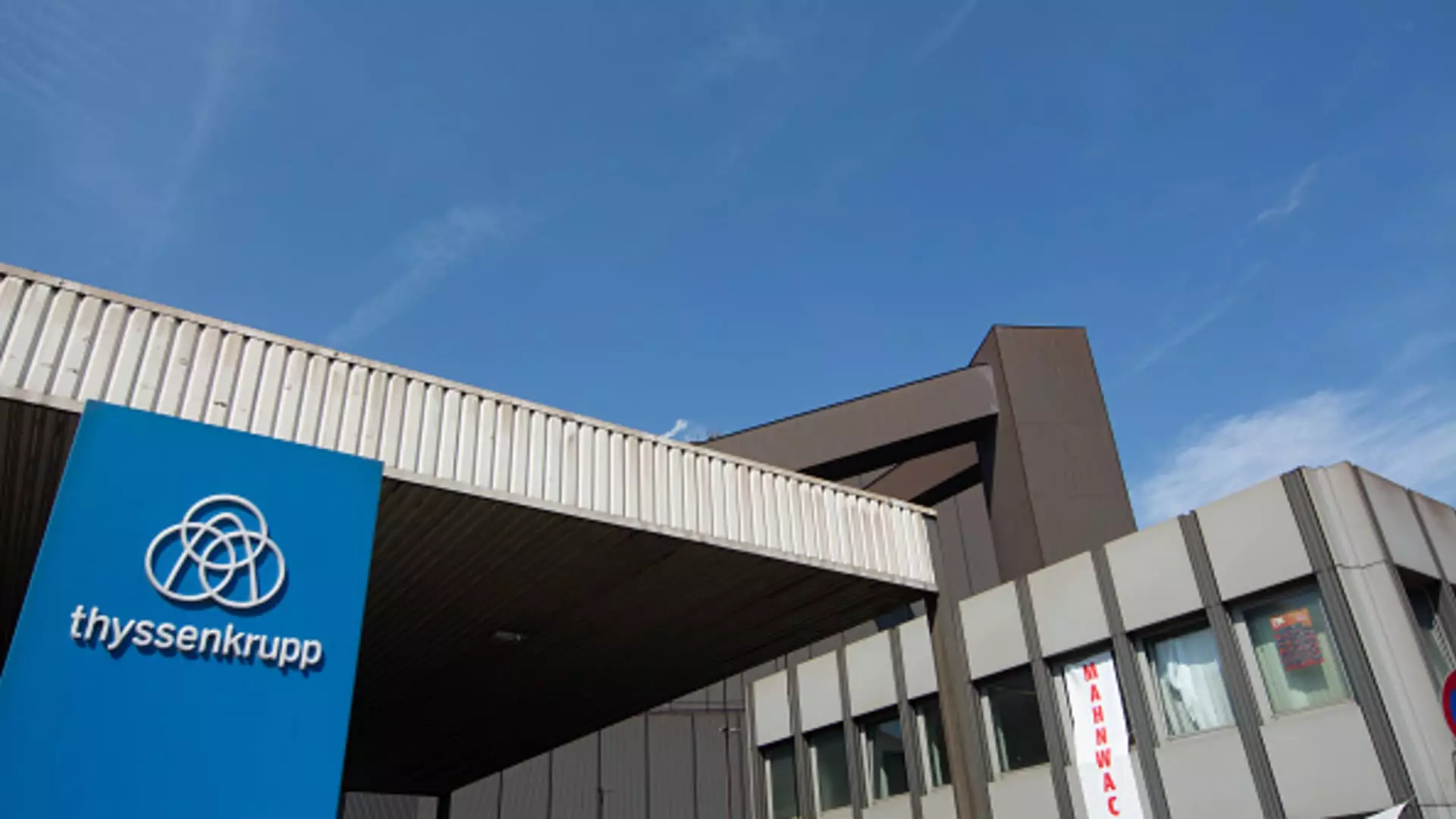Thyssenkrupp AG, the German industrial giant, has prompted market optimism with its recent earnings report revealing a reduced net loss. The company’s stocks saw a significant spike, rising by 7.9% which suggests a positive market reaction to its financial recovery signals. Despite facing immense challenges within its steel division, the latest quarterly performance illustrates the firm’s potential for recovery. The previous fiscal year ending September 30 saw a drastic reduction in net losses, dropping from 2 billion euros to 1.5 billion euros, indicating the company’s efforts to stabilize its financial outlook amidst ongoing hardships.
Impairments and Strategic Realignment
The main contributor to Thyssenkrupp’s financial struggles was reported to be substantial asset impairments, totaling roughly 1.2 billion euros, predominantly stemming from its Steel Europe division. The firm’s commitment to addressing its strategic challenges was echoed by CEO Miguel Lopez, who emphasized the necessity for decision-making in pivotal areas, particularly regarding Steel Europe and Marine Systems. These remarks underscore the need for swift and effective restructuring to salvage operations while adapting to market demands influenced by the green transformation initiative. This focus on innovation and sustainability hints at a broader industry trend wherein companies are increasingly pressured to minimize their environmental impact.
Positive Cash Flow and Future Prospects
Adding a layer of optimism, the adjusted earnings before interest and taxes (EBIT) of 151 million euros exceeded analysts’ expectations. This performance, while not entirely stellar, points to a potential turnaround and improved operational efficiency. The increase in free cash flow during the quarter left Thyssenkrupp in a favorable net cash position of 4.4 billion euros, a figure that surpassed previous forecasts and reflects the firm’s enhanced liquidity options for future strategic investments.
Thyssenkrupp is undergoing a substantial transition, with Steel Europe being restructured into an independent entity. The successful divestiture of a 20% stake to the EP Corporate Group is a strategic move towards this goal. Furthermore, discussions about forming a joint venture establish a proactive approach of collaboration that seeks innovation and operational synergies crucial for competitive viability in the steel industry. Additionally, the potential sale of the Marine Systems division reflects Thyssenkrupp’s willingness to streamline operations focusing on core competencies and adapting their portfolio to reduce risks.
Despite internal restructuring efforts, Thyssenkrupp faces an uphill battle against an external backdrop of economic instability in Germany, marked by diminished global demand for industrial goods. With the ruling coalition recently collapsing and business activity plummeting, the firm must navigate a complex political landscape that could further complicate its recovery plans. As Germany continues to wrestle with these economic pressures, Thyssenkrupp’s path towards stabilization will likely depend on effective governance and adaptability to changing market dynamics, all while fulfilling expectations regarding sustainability and reduced environmental footprints.
While Thyssenkrupp’s journey to recovery appears fraught with challenges, the company’s recent financial performance and strategic initiatives offer a glimpse of hope, particularly as it seeks to navigate an evolving industrial landscape and manage internal restructuring amidst external pressures.

